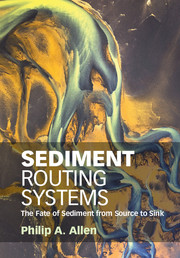Book contents
- Frontmatter
- Contents
- Preface
- Part I A Global View of Sediment Routing Systems
- Part II The Segments of Sediment Routing Systems
- 4 The Catchment-Fluvial Segment
- 5 The Continental Shelf Segment
- 6 The Deep Marine Segment
- Part III The Functioning of Sediment Routing Systems
- Part IV The Stratigraphic Record of Sediment Routing Systems
- References
- Index
6 - The Deep Marine Segment
from Part II - The Segments of Sediment Routing Systems
Published online by Cambridge University Press: 03 October 2017
- Frontmatter
- Contents
- Preface
- Part I A Global View of Sediment Routing Systems
- Part II The Segments of Sediment Routing Systems
- 4 The Catchment-Fluvial Segment
- 5 The Continental Shelf Segment
- 6 The Deep Marine Segment
- Part III The Functioning of Sediment Routing Systems
- Part IV The Stratigraphic Record of Sediment Routing Systems
- References
- Index
Summary
- Type
- Chapter
- Information
- Sediment Routing SystemsThe Fate of Sediment from Source to Sink, pp. 170 - 190Publisher: Cambridge University PressPrint publication year: 2017



